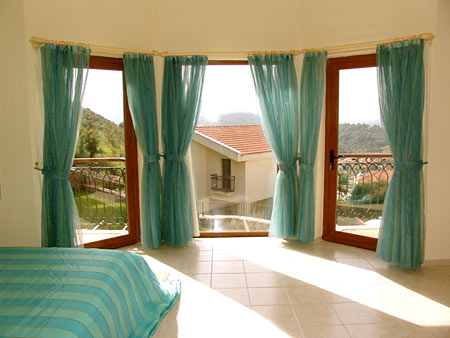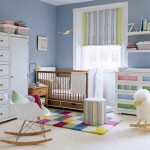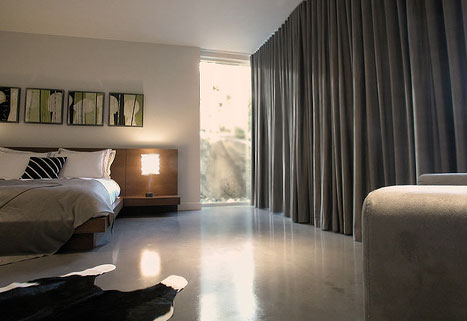Bedroom Windows
Monday, December 8th, 2008Darkness on Sunday mornings. Bright sun on Monday. Privacy from the neighbors, but also a view we do ask a lot of our bedroom curtains. And it helps, of course, if they have a romantic or peaceful quality that makes the bedroom more of a sanctuary. Not every trade secret in this chapter can meet all these requirements. Depending on your needs, you may have to (a) prioritize or (b) combine treatmentsâ€â€using, for example, an opaque shade behind a sheer drapery.
Now for the easy part: You can dress a bedroom window with less effort than a window in a living or dining room. Consider a blowsy length of gauze tossed over a rod: in the living room, it can look insubstantial, but in the bedroom, it suggests a veil. Delicacy works in the privacy of a bedroom, and delicate fabrics (think linen, lace, and sheers) are often reasonably priced.

Simplicity works, too. A surprising number of houses and apartments by top designers have bedroom windows dressed only in pristine white schoolhouse shades, the kind you may recall from your third-grade classroom, If the shades are custom-made for a tailored fit, you’ll find that the understatement works.
Try not to overcoordinate. If you make curtains to match your patterned sheets, the room will look predictableâ€â€and after a while you’ll tune out that gorgeous pattern. Let window treatments stand on their own. If you still crave coordination, do something overscaled and unexpected: cut an 18-inch-high band from the patterned sheets and sew it across the base of starched white curtains. You’ll have broken out of a formula, and the details of your decorating will stand out the better for it.



